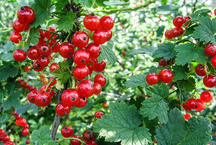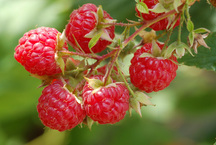8 best gooseberry varieties

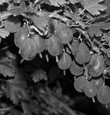



Gooseberry is a useful berry for children and adults. Gardeners love him for his unpretentiousness and abundant annual harvest. Plants quickly become fruiting and do not need pollinator varieties.
Gooseberry varieties vary greatly in color, shape, size and taste of the berries. The color of the berries conventionally distinguish two groups: green and dark, but the shades are much larger. The taste has several variations, there are varieties with both pronounced sourness and fresh, with a grassy flavor. In this case, sweet-sweet berries are not uncommon.
For the gooseberry is characterized by the presence of thorns on the shoots and pubescence of the berries, but the severity of these characteristics in varieties is different. Domestic hybrid forms of gooseberry differ in the predominance of the North American or Western European genes. In the first case, the varieties inherit high winter-resistance, endurance, adaptability and small-fruited. The genes of Western European varieties carry large-fruited, dessert taste of berries, low growth rates and susceptibility to diseases. Among the modern domestic assortment there are many good dessert gooseberry varieties with good immunity. We present you a description of the best varieties of gooseberry - according to experienced gardeners.
Rating the best varieties of gooseberry
| Category | A place | Name | Rating | Price |
|---|---|---|---|---|
| The best early varieties of gooseberry | 1 | Ural Emerald | 9.8 / 10 | 350 |
| 2 | Prunes | 9.7 / 10 | 250 | |
| 3 | Spring | 9.7 / 10 | 350 | |
| The best mid-season varieties of gooseberry | 1 | Krasnoslavyansky | 9.8 / 10 | 250 |
| 2 | Beryl | 9.7 / 10 | 250 | |
| 3 | North captain | 9.7 / 10 | 250 | |
| The best late varieties of gooseberry | 1 | Date fruit | 9.8 / 10 | 380 |
| 2 | Grushenka | 9.7 / 10 | 260 |
The best early varieties of gooseberry
|
Ural Emerald
350 (biennial seedling in container)
Opens our ranking of the best varieties of gooseberry dessert green variety of early ripening. Bush srednerosly, thick and compact. Shoots are straight, thick, covered with spikes of medium size along the entire length. Emerald green berries with pronounced light venation (similar to small watermelons), weighing 3.5 - 7.5 g, leveled, oval, with a thin smooth skin, without pubescence, yellow-green pulp. The taste qualities are gaining a grade of 5 points, sugar prevails, but a slight sourness is also felt. The average yield per bush is 6 kg, but with proper care it can reach 10 kg. It is characterized by high winter hardiness and good immunity. This variety of gooseberry is good for Western Siberia, it is successfully grown in the Moscow region.
Main advantages:
Minuses:
|
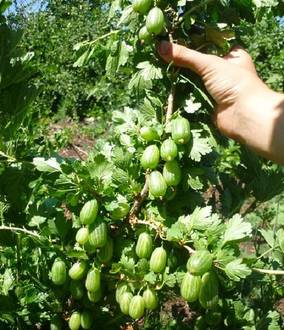 9.8 / 10
Rating
Reviews
In my collection, this is the best variety of gooseberries. During the years of cultivation, not a single disease has been seen, fruitful, berries are large (one to one) and very tasty. |
|
Prunes
250 (for one-year sapling in the package)
Early variety for processing and fresh consumption. Bush height of not more than 1.5 m, moderately spreading. The shoots are thick, straight or slightly curved, branching in a moderate degree, rarely covered in the lower part with single short spikes. Berries are drop-shaped, weighing up to 4.0 g, dark red, blackening when fully ripe, without pubescence. The skin is dense, with a waxy coating, the veins are faintly visible. The taste is dominated by sourness, there is a characteristic flavor and plum flavor. Berries are transportable. The average productivity of adult bushes 2 - 4 kg. Gooseberry "Prune" winter well in the conditions of the Central strip and the Urals. It is resistant to powdery mildew, but in some years it can be affected by anthracnose and septoria. In unfavorable years and with low agricultural technology, the berries shrink dramatically.Recommended for cultivation in the Central region, the Volga region and the Urals.
Main advantages:
Minuses:
|
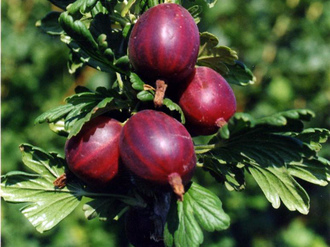 9.7 / 10
Rating
Reviews
This gooseberry blooms very early, when others do not even think. Shrubs almost spread along the ground - you need a backup. Planted for wine and compote, but in the end it is eaten fresh. |
|
Spring
350 (for a two-year sapling in a container)
Early ripe green gooseberry universal purpose. A bush with medium vigor, with a thick crown. The shoots are upright, thick, very rarely covered with single spikes of medium size. The berries, when fully ripe, are yellow-green with a blush, aligned, oval, weighing 5 - 7 g, dessert taste with sourness and delicate aroma, smooth skin. The average productivity of an adult bush is 7.5 - 9 kg. It has high rates of winter resistance, safely tolerates spring cooling. It exhibits excellent resistance to powdery mildew and septoria, rarely affected by anthracnose. A high level of self-fertility ensures stable yields. This variety of gooseberry has a good rooting rate for cuttings and cuttings. Recommended for cultivation in the Central region, but successfully cultivated throughout the Central Belt. Main advantages:
Minuses:
|
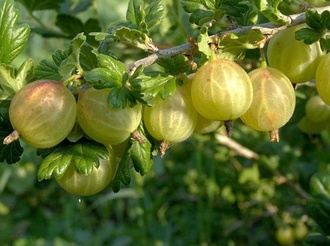 9.7 / 10
Rating
Reviews
I distinguish this gooseberry for thin skin, pleasant sourness and "nebolyavost". Harvest always happy. |
The best mid-season varieties of gooseberry
|
Krasnoslavyansky
250 (for one-year sapling in the package)
Good mid-season variety of gooseberry for universal use. Shrubs sredneroslye, slightly sprawling. Shoots are straight, along the entire length covered with spikes of medium size. Fruits are red with a cherry tinge, weighing 4 - 6 g, round or slightly oval. Peel with short pubescence, thin but strong, with mild venation. It tastes sweet with fine acidity, tasting score of 5 points. The productivity of an adult bush is 5-6 kg. Shows the average winter hardiness, in some years, moderately affected by disease. It is successfully grown in the Leningrad, Moscow, Vologda, Ryazan, Nizhny Novgorod and Sverdlovsk regions. Gooseberry Krasnoslavyansky according to gardeners is considered the most unpretentious of the dessert varieties.
Main advantages:
Minuses:
|
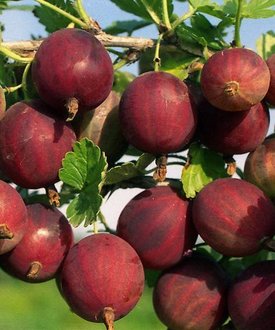 9.8 / 10
Rating
Reviews
I grow this variety for a very long time, the bush has never been sick and froze, I have not tasted tastier and sweeter than berries. |
|
Beryl
250 (for one-year sapling in the package)
Mid-season green gooseberry. Bushes sredneroslye, moderately sprawling, with a dense crown. The shoots are curved, with a drooping top, at the bottom are covered with single spikes. When fully ripe, the berries remain light green, aligned, weighing from 3.9 - 6.5 to 9.2 g, round, with thin skin, smooth, without puffing. The taste is sweet with a pleasant sourness. The yield of an adult bush 5 - 10 kg. Maximum productivity is achieved only with high agricultural technology. In rainy summer, the yield decreases due to the average self-fertility. It has a high winter hardiness. Recommended for Western Siberia. Gardeners from Moscow and Lipetsk regions get good results in taste and immunity to disease. In the climate of the Leningrad Region, the affection of powdery mildew increases, and the taste is no longer gaining 5 points.
Main advantages:
Minuses:
|
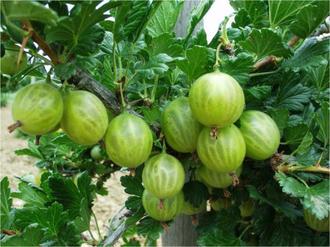 9.7 / 10
Rating
Reviews
The best gooseberry for the Moscow region is not only pleasant to eat from the bush, but also painless: even children do not notice thorns. |
|
North captain
250 (one-year sapling in the package)
Mid-season gooseberry with good immunity, used mainly for processing. Bushes are powerful, vigorous, sprawling during the fruiting period. The shoots are sloping, slightly curved, strongly branched, at the base covered with rare, thin and short spikes. The berries are round, maroon, almost black, weighing 3.5-4 g, the skin of medium density, with a waxy coating. In terms of taste, it refers to technical varieties; processed products (jam, juice, wine) are very tasty and receive a high tasting score. When overriding the skin does not crack, the berries do not crumble for a long time. The maximum productivity of an adult bush is 8 - 12 kg. Gooseberry Northern captain is well rooted and quickly propagated by layering. It shows high winter hardiness and resistance to powdery mildew, anthracnose and septoria, and is slightly affected by pests. Recommended for cultivation in the North-West region.
Main advantages:
Minuses:
|
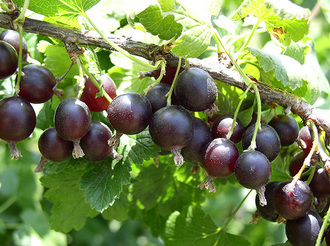 9.7 / 10
Rating
Reviews
For fresh use, this gooseberry is sour, but the berries go well for wine. Like abundant fruiting and highly resistant to diseases. |
The best late varieties of gooseberry
|
Date fruit
380 (for a two-year sapling in a container)
Late-ripe dessert variety of gooseberry old selection, with a predominance of Western European genes. The bush is vigorous and spreading. The shoots are powerful, straight or slightly curved, in the lower and middle parts densely covered with sharp spikes of medium size. The branching of the bush is strong, so timely thinning is required. Berries are brown-red, oval, weighing 10 - 15 g (in some reviews up to 20 g), without pubescence, with green flesh and dense skin. The taste is sweet with sour, there is a strong aroma. Fruits have good transportability, can be stored chilled for several weeks. The yield of an adult bush is 8 - 10 kg. Differs in durability: without rejuvenating pruning, bushes actively bear fruit for almost a quarter of a century. Shows good winter hardiness, but freezing is possible in severe winters. Susceptible to disease, when grown, preventive treatments are used. Widely distributed in central Russia.
Main advantages:
Minuses:
|
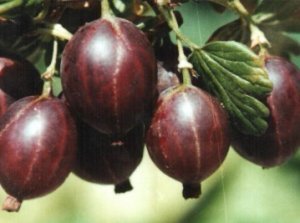 9.8 / 10
Rating
Reviews
Very large good gooseberry, but with proper care, of course. On the bush matures badly, the berry cracks, but it matures well in the refrigerator, acquiring a very sweet taste. |
|
Grushenka
260 (for one-year sapling in the package)
Late ripening bushless gooseberry. Bush srednerosly, compact, densely covered with leaves. Shoots drooping, without thorns, strongly branched. New shoots are formed actively. When ripe, the berries acquire a dark purple color, pear-shaped, weighing 4.3 - 4.5 g, pleasant acidity prevails in taste. The skin is thin, but durable, with a waxy coating. Berries are transportable, with full ripening do not crumble for a long time. A separate bush annually gives at least 6 kg of berries. Gooseberry "Grushenka" is valued for its unpretentiousness to growing conditions and good immunity. Active growth and fruiting are observed until the age of 20. The variety is grown in central Russia. Main advantages:
Minuses:
|
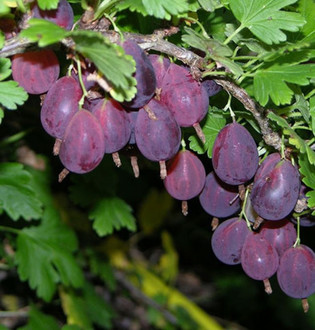 9.7 / 10
Rating
Reviews
This gooseberry is praised in the reviews for yield and simplicity, the taste of berries is normal. |
In addition to the varieties described, experienced gardeners recommend: Pink 2, Souvenir, Russian, Plum, Summer, Chernomor, Seyant Lefora. Among them are both dessert and technical varieties.
The best time to plant a gooseberry is autumn. A simple and reliable method of reproduction is rooting of horizontal cuttings of woody or growing shoots. Compared with currants, gooseberries are less winter-hardy, therefore in the northern regions in the winter it is spud or mulched with a thick layer of organic matter. To prevent the spread of powdery mildew around the seedling, a square support frame is arranged, which will not allow the branches to fall to the ground under the weight of the crop.
Have a good harvest!
